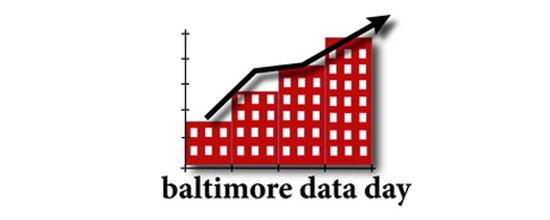At today’s Data Day, community leaders from around Baltimore City, working in nonprofits, civic- and faith-based groups, and government agencies, will begin examining 55,000 individual data points—100 separate data points collected in 55 communities throughout the city—while exploring how the intersection of community-based data and technology can assist neighborhoods’ efforts toward improvement.
Organized for the first time two years ago, Baltimore Data Day is a program organized by the Baltimore Neighborhood Indicators Alliance-Jacob France Institute at the University of Baltimore.
The purpose? Put on a series of workshops explaining to people that statistics can be our friend, and that using city and state data can help communities reduce crime rates, improve public transit, and help students perform better in school.
“People really want to manage success,” says Seema Iyer, an associate director of the Jacob France Institute who oversees Data Day. “Based on data, people can try to intervene.”
Using Census tracts, BNIA-JFI has split Charm City into 55 Community Statistical Areas, each of which are related to the city’s neighborhoods as defined by the planning department.
U.S. Census figures, data extracted from the city’s Open Baltimore portal, and other information — like anonymized academic records of individual students in the Baltimore City School System, for example — is compiled, and then used in the reporting of different “vital signs”: housing and community development, sanitation, education and youth, and others.
This is familiar ground for Iyer, who spent five years with Baltimore’s Department of Planning as the division chief of research and institution planning. It wasn’t until after working on the 2010 U.S. Census that talk began of finding a way to effectively use the numbers collected.
“It seemed like a good follow-up that we could have a workshop saying here’s what you can do with the data,” says Iyer. “We kind of did Data Day on a whim.”
That first year, the event had 125 participants. The second year, 200 people showed up. Registration for this year’s Data Day, which also marks the tenth anniversary of the creation of the Baltimore Neighborhood Indicators (hence the 55,000 data points), had to be cut off earlier this week. (Although, those not in attendance can watch portions of the event online.)
Ultimately, says Iyer, the data collected gets packaged into downloadable formats for everyone’s use. Already a team of students from Morgan State University has taken the data and created a mobile app for communities on the Android platform. And in August, a partnership between BNIA-JFI and Maryland Institute College of Art will have students using the data sets to create visualizations—charts, tables, maps.
“The students have access to four or five large data sets,” Iyer says. “It’s very open-ended. We don’t even know what they’re going to come up with. “
In the future, she thinks that the neighborhood indicators information could be included in existing resources like the Baltimore City iMap. For now, Iyer says, this event is as much for Baltimore’s tech community as it is for community leaders and institutions.
“We have all this data,” she says. “We would love to know what to do with it.”
Baltimore Data Day puts big data in communities’ hands







